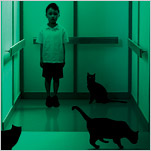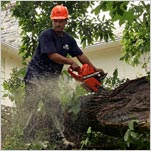(Page 2 of 2)
The mayor said that he suspected on Thursday that the utility company’s estimate of 2,000 customers without power — a ‘customer’ could be one person or one building with many residents — was probably low.
“They cannot tell from their computers,’’ Mr. Bloomberg said on a radio call-in program earlier today. “Their estimates at the beginning were based on how many people called up and said, ‘My power’s not working.’ You can question whether that’s an intelligent way to do it.”
The only way to tell, he said, would be to actually see which buildings had no power, he said, so on Thursday, he “demanded that they take a look, and they drove down almost every street.’’
“It got so late that, apparently, at that point, they said, ‘Well, everybody’s gone to bed, you don’t know whether people have power, you can’t tell from looking,’ and they tried to actually look,’’ he said.
“If it was one house in a block that didn’t have lights on, you assumed that there’s power there because typically everybody in that block would be out, or nobody,’’ he said. “If all of the block is dark, they assume that all of those people are without power.’’
Based on that survey, they concluded that 25,000 customers were without power. At the news conference in Queens, the mayor said that meant around 100,000 people.
“The real issue is not how many,” he said. “The real issue is how fast can they open up every manhole and fix if there is a problem.’’
The mayor said that additional police officers had been assigned to the blacked out area of Queens to patrol streets, deter crime, offer assistance and direct traffic at intersections where traffic lights were still not working.
Emergency calls to 911 were down by 40 percent in the area, he said. “It may be because everybody’s cooperating, or it may be because the police officers are out there,” he said.
Extra ambulances, Fire Department equipment and other aid were being sent to help and rescue the infirm and any elderly residents who were suffering from heat problems or were stranded because elevators were not running, he said.
Many residents had complained that the city was ignoring a prolonged blackout affecting several neighborhoods in western Queens, which happens to be where most of the city’s power plants are located. The mayor himself did not travel to the affected areas until Thursday, when many businesses had already been forced to close, residents were throwing out rancid food, drivers were taking turns creeping through intersections with darkened traffic signals and many people were forced out of their homes to seek relief from the heat.
The Yellowbird Repair Shop, directly across 20th Avenue from the Charles Poletti Power Plant in Astoria, remained largely without power Thursday.
“All they have to do is run an extension cord out to us and we’re open for business,” said Chris Kalatzis, the shop manager. He said his house in Astoria was also without power, ruining $200 worth of food in his refrigerator.
Merchants were dismayed and angry at the losses they were suffering from a power problem that began during a heat wave.
“Even third-world countries do not have this kind of problem,” said Jimmy Istavrof, 57, who owns the J & T Greek and Italian Deli on Ditmars Boulevard. “All this from a couple of 90-degree days.”
He showed how his Greek desserts and other foods sat spoiling in his freezers.
“You see? Like soup,” he said, squeezing a soft carton of ice cream. “It’s all going to shame.”














